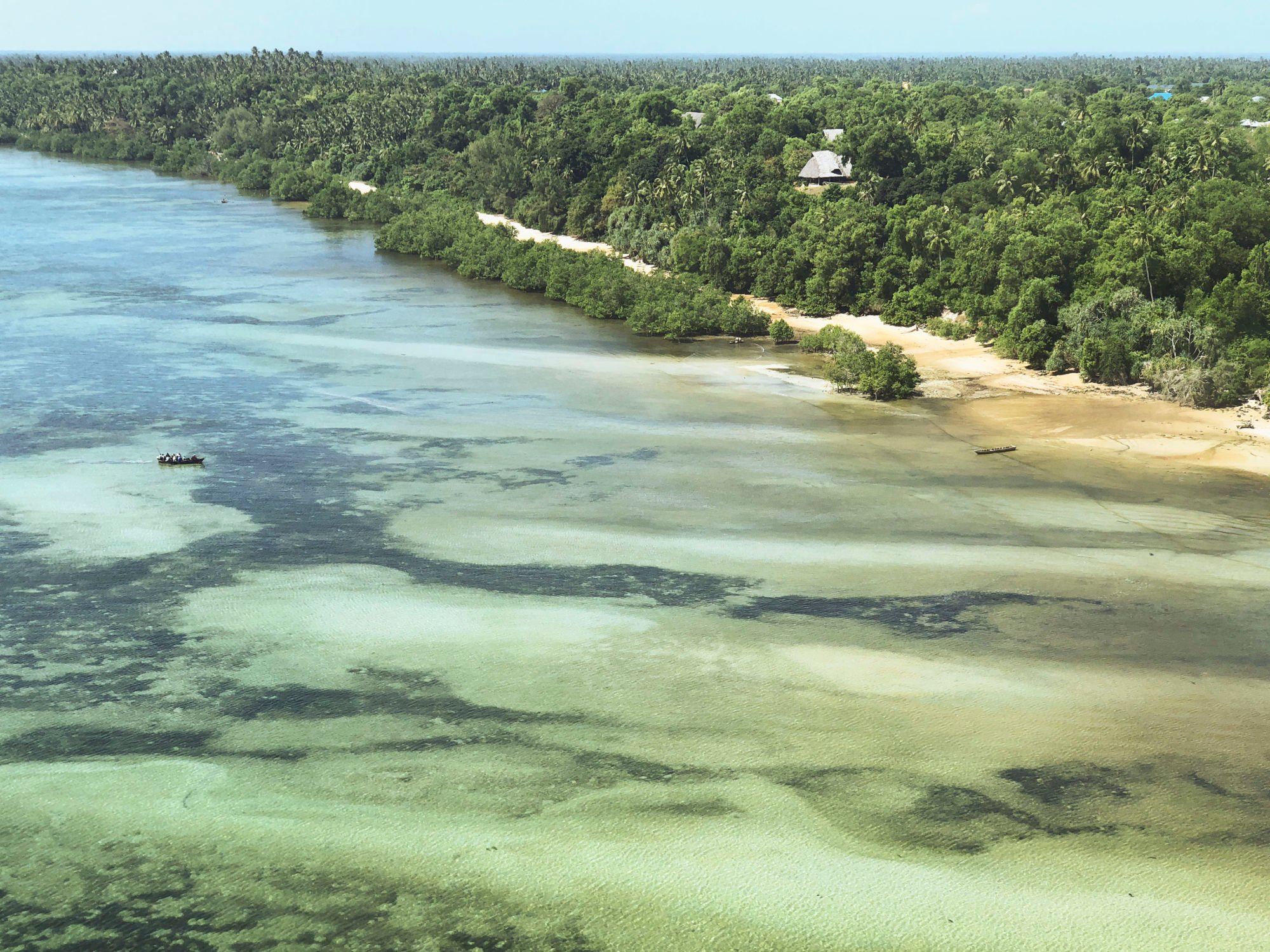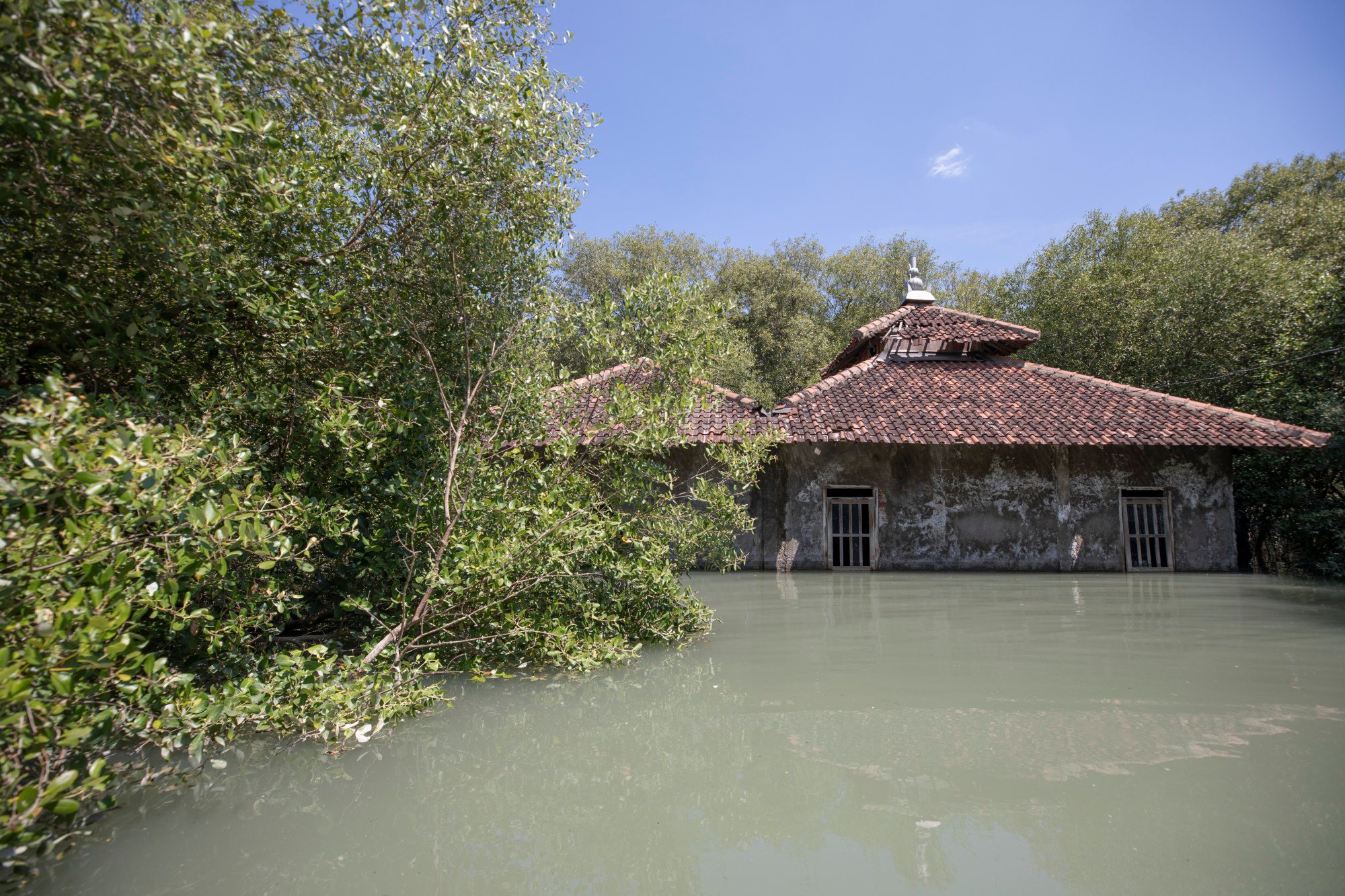
Why mangroves are critical in climate change fight, and how Indonesia and Tanzania are using eco-tourism to protect them
- At the 28th United Nations climate change conference in Dubai, carbon dioxide-absorbing mangroves were in focus for their ability to help slow climate change
- Experts from Indonesia and Tanzania were among those who spoke in detail about the trees’ benefits and why protecting them requires expertise and smart funding
On the coast of Tanzania’s Mafia Island is a blue lagoon – a dreamlike pool of bright turquoise water, filtered and cooled by the mangroves that surround it.
Ailars David, a marine conservation warden at the reserve, says there is a plan to build a boardwalk for tourists to reach the lagoon so they can swim surrounded by nature and the freshest of air.

Mangroves act as carbon sinks, absorbing large quantities of planet-heating carbon dioxide, as well as offering benefits from protecting biodiversity and purifying water to protecting coastlines from erosion as sea levels rise on a warming planet.
Some people on Mafia Island – which has a population of around 50,000 – want to cut down the coastal vegetation as wood for cooking and fires, David said, while the area, popular with divers, is also under threat from tourist developments looking to clear trees to open access to the beach.
US$1 billion Mexico project has ‘biggest potential for sustainable tourism’
“Those kinds of illegal activities are quite challenging,” said David, 27, a marine scientist on the island in the Indian Ocean, off the east African coast, south of Zanzibar.
The latest draft of the agreement expected from governments at Cop28 recognises the role of nature in reducing greenhouse gas emissions and helping people adapt to climate change impacts.

“Mangroves for Indonesia perform a multitude of critical functions,” said Erick Thohir, the nation’s coordinating minister for maritime affairs and investment, describing them as “remarkable trees that become guardians for our archipelago”.
Speaking at a ministerial event at Cop28, Thohir said Indonesia has the largest area of mangroves in the world, at 3.36 million hectares, which help protect its coasts and biodiversity, along with providing economic benefits to communities through eco-tourism and carbon markets.
Indonesia belongs to an international alliance of about 40 countries working to coordinate and share knowledge in a bid to protect the world’s 15 million hectares of mangroves.
You cannot just plant mangroves anywhere … It requires knowledge in restoring mangroves and most of the practitioners do not have those skills
In the run-up to Cop28, efforts were stepped up to mobilise US$4 billion in funding to protect those mangrove forests by 2030.
“We realise the importance of collective efforts and connected solutions with countries across the globe,” Thohir said.
Pieter van Eijk, programme head of deltas and coasts at Wetlands International, a non- profit conservation organisation, highlighted several threats to the world’s mangroves, such as shrimp farms and infrastructure development.

He warned that many mangrove restoration projects fail because of confusion over land ownership, too much focus on planting mangroves instead of improving the broader environment, and a lack of engagement with communities that rely on them.
“When [communities] don’t own a restoration project, the risk is really big that then after the project, they will just do what they used to do,” van Eijk said.
By investing money in unsuccessful schemes, he added, projects run the risk of “quite literally throwing a lot of money in the sea”.
Village swallowed by rising sea level an eerie tourist draw
Mafia Island’s David hopes that the international interest in mangroves at Cop28 can increase finance and capacity-building for the reserve’s work such as training staff.
“You cannot just plant mangroves anywhere,” he said, adding that factors like the soil and pH of water need addressing first. “It requires knowledge in restoring mangroves and most of the practitioners do not have those skills.”
David said the reserve is looking to map its conservation areas to understand the amount of carbon sequestered by the mangroves, which could help it tap into markets for carbon credits and emerging biodiversity credits.
‘Railway imperialism’: how China bent to those that owned its tracks
Ever since he started as a marine scientist, David said he has worked with young people, aiming to develop a network of youth who understand how the ocean works and can take action in their own communities.
“My passion is to mobilise young people and help them to restore the ocean,” David said.
Additional reporting by Staff Reporter
